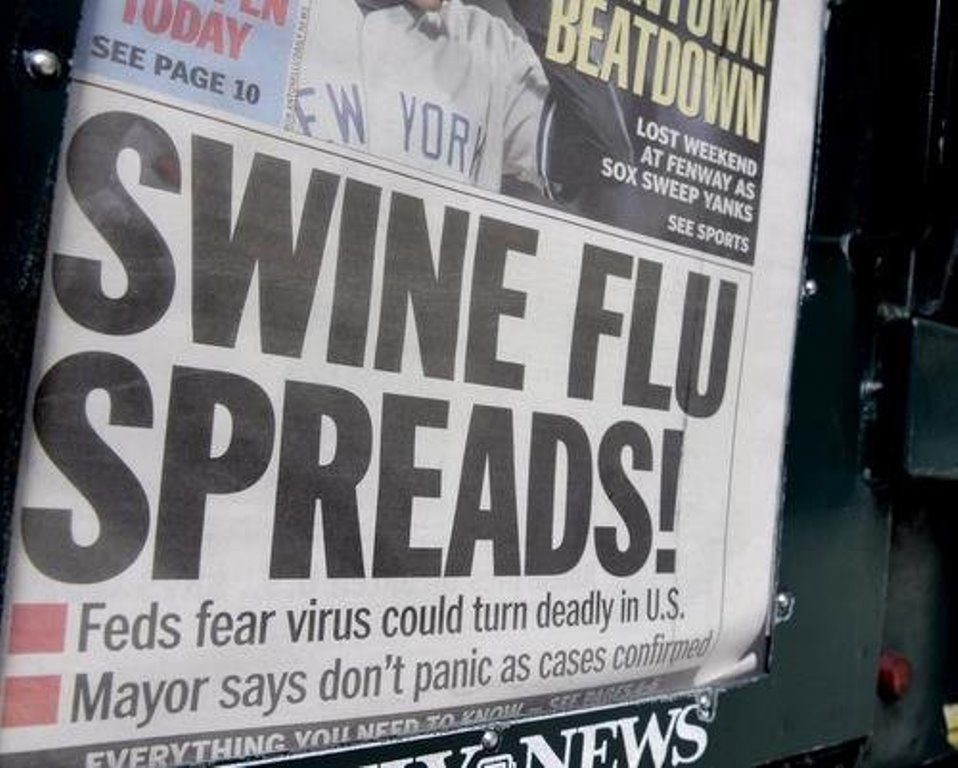With 29 deaths now linked to the pandemic and a further 53 patients in intensive care, the cabinet's emergency planning committee, Cobra, is meeting three times a week to prepare for the impact of the rapidly spreading pandemic.
On a day of dramatic revelations, the Department of Health revealed:
- The launch of the National Pandemic Flu Service helpline for England.
- 55,000 new infections last week.
- More than 650 people in hospital.
- Half of the UK's children might fall ill.
- 132 million doses of a vaccine - still in development - have been ordered, enough for two injections for every UK citizen.
The online service will let people follow a series of diagrams to input their symptoms, which will then allow them to prescribe drugs for themselves. Every caller will be given a unique reference number after giving their name and address, and will be reminded that antivirals have side-effects. Sir Liam Donaldson, the chief medical officer, said the government would have to trust in the "honesty" of the public not to abuse the system.
The devolved administrations in Scotland, Wales and Northern Ireland will not be part of the National Pandemic Flu Service, but will still rely on frontline services to treat patients.
The new total for swine flu-related deaths includes 26 in England and three in Scotland. It is not known how many had underlying health problems.
Last night, it was reported that a six-year-old boy had died of swine flu in Kent and his school had been closed, but local health authorities refused to confirm any details beyond saying they were investigating a case of swine flu.
The death earlier this week of Chloe Buckley, a six-year-old London schoolgirl, is still being investigated. The first six-year-old to die was Sameerah Ahmad in Birmingham, who had underlying health complications.
Health ministers from across the UK are attending weekly Cobra meetings to assess the impact of the disease. Senior civil servants from across Whitehall are also conferring three times a week.
The health secretary, Andy Burnham, said: "I want the public to be reassured we have been preparing for the possibility of a pandemic for a number of years and all that pre-planning is now paying dividends."
Sir Liam Donaldson said there was no evidence to suggest that the virus was mutating into a more virulent form.
The new service would, he said, "take the pressure off the frontline primary care and A&E departments to allow them to concentrate on the most ill patients".
Current planning assumptions involve a range of anticipated casualty rates. It is expected that as many as 60% of the population will eventually become infected, but only around 30% will fall ill and experience significant symptoms. That would produce 65,000 deaths if the mortality rate was as high as 0.35%, and 19,000 deaths if it was a rate of 0.1%.
The most optimistic scenario set out is based on only 5% of the population falling ill and 3,100 dying.
Comment: Final death toll (officially anyway - it could have been lower) in the UK?
214. Most with underlying chronic health problems.
The mortality range should be seen in the context of recent outbreaks of seasonal winter flu, such as that in 1999-2000, which caused more than 21,000 deaths.
Comment: Interesting. The media at least had the sense to provide such contextual data in the last major pandemic hoax.
Donaldson said: "We can't give an estimate of deaths from this virus yet. We don't know enough about it."
Comment: And yet, the govt told everyone then that 65,000 Britons could die!
Health officials remained uncertain about what could happen next: infections may accelerate until they reach a peak in September; or the closure of schools for the summer may slow the spread of the disease.
The officials are particularly concerned that the hospitalisation rate is highest in the under-five age group, with young children who catch the infection three times more likely to need inpatient treatment.
Donaldson said infection rates were "absolutely intense" in "hot spots", and spreading.
Comment: Yeah, except that, in hindsight, they weren't.
CDC admits number of 'swine flu' cases overestimated because they stopped testing for H1N1 virus and began guessing numbers
The NHS has drawn up contingency plans to cancel routine operations if the situation deteriorates further.
One firm monitoring the outbreak said that up to a third of the UK's workforce might have fallen sick by September. Oxford Economics, a forecasting organisation, warns that the pandemic could knock 5% off the country's gross domestic product.




Comment: "65,000 dead" last time, "65 MILLION" this time (globally).
It's as if the elites are being beamed with the same 'facts' with which to gaslight people every time there's a 'pandemic'.